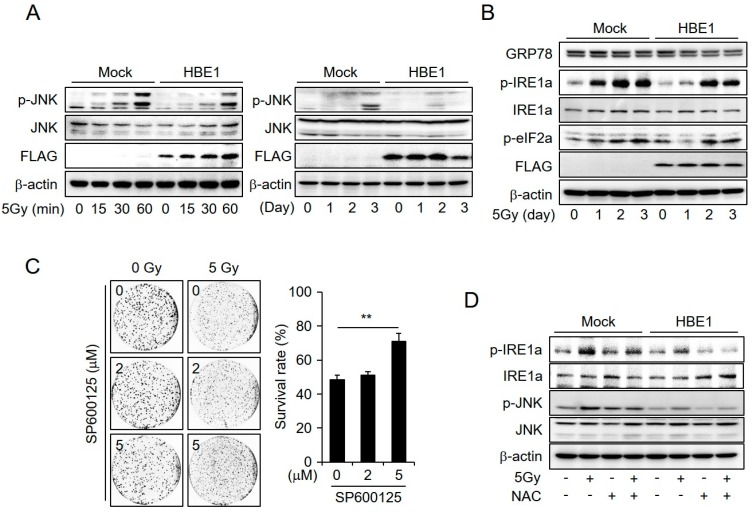Figure 4.
Enrichment of HBE1 levels decreases the radiation-induced activation of Jun amino-terminal kinase (JNK) and endoplasmic reticulum (ER) stress. After the transfection of SW480 cells with a flag-tagged HBE1-overexpression or mock vector in the presence or absence of radiation (5 Gy), the activation of JNK, ER stress-related proteins, and colony formation ability were measured by immunoblot analysis and a clonogenic assay. (A) Lysates were analyzed by western blotting to determine the activation level of p-JNK, total JNK, and FLAG for early (left panel) and late (right panel) timepoints after radiation exposure (5 Gy). (B) The activation of ER stress signaling proteins was assessed. β-actin was used as a loading control. (C) Following exposure to irradiation (5 Gy) in the presence or absence of the JNK inhibitor SP600125 for the indicated doses, cell survival rate was measured using a clonogenic assay ** p < 0.01, and compared to that in untreated cells. (D) After transfection with an HBE1-overexpression or mock vector in the presence or absence of radiation (5 Gy) exposure and ROS scavenger treatment, the inhibition of radiation-induced ER-stress by N-acetyl cysteine (NAC; 10 mM) was analyzed by western blotting. β-actin was used as a loading control. The phosphorylation of IRE1a and JNK was measured by pretreating cells with NAC before exposure to 5 Gy of irradiation.

